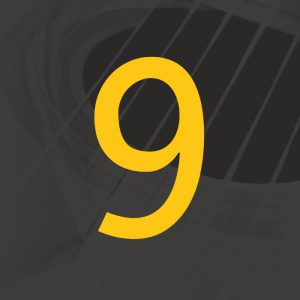 In jazz music a ninth implicates the seventh. Thus, in
In jazz music a ninth implicates the seventh. Thus, in C9
for example, you should play a seventh as well as the ninth. In this way, time is saved in both writing and reading chords, because most of the time you want to play a ninth in combination with a seventh. If you ever need to notate a chord with a ninth but without a seventh, you write Cadd9
. The above knowledge is taught on conservatories throughout the world, and you may find this information as well in theory books and on Wikipedia.
So you might think this is the common way of notating ninth chords. But it isn't! Nowadays, all kind of musicians share chords on the internet. And the way people are writing chords is very much influenced by rock and pop. In these music styles, an added ninth is much more common than a ninth plus seventh. So, on the internet people tend to use C9
for a chord with just a ninth and no seventh whatsoever.
For example, take a look at the chords of a hit song like Hello by Adele. On Ultimate Guitar, probably the most well-known site with tabs, you may find these chords:
EM G D C9
Hello, it’s me
The same goes for I see fire of Ed Sheeran. The guitar introduction of that song is mostly written as EM C9 D EM
. In both cases the ninth chord is definitely not meant as having a seventh in it. (Try it for yourself, that definitely sounds wrong.) On the internet in lots of tabs the ninth is used in the same manner.
So who is right and who is wrong? Well, no-one. There is no right or wrong in this matter. As in spoken language, the conventions in writing chord symbols is always changing. It reflects the needs of the people using it. As the music changes, so are the conventions for writing chords.
So, the actual case is such that in jazz a C9
indicates a triad with a b flat plus d, and in pop it indicates a triad with just a d. This means that when you are reading chords, you should always be aware of the style and the context of the song.